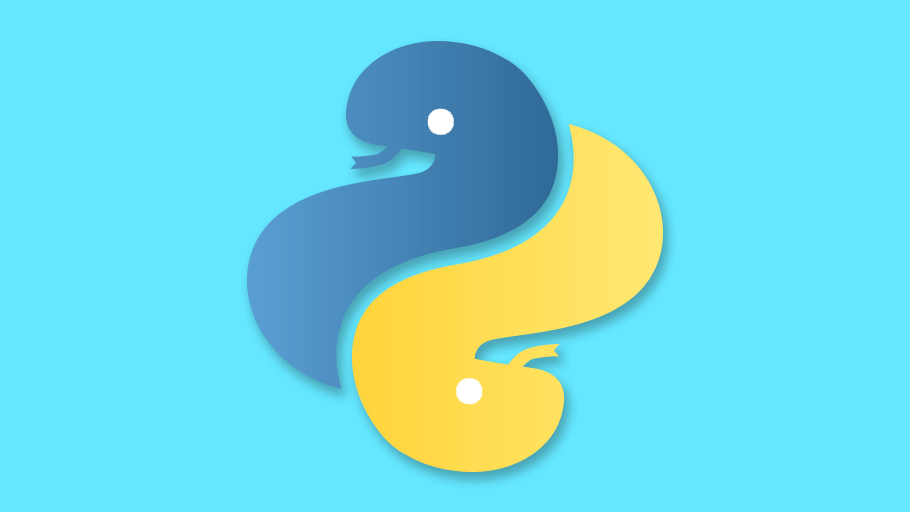Djangoのテンプレート機能とはなにか?と基本的な使い方について紹介します。
Djangoのテンプレート機能とは?
Djangoでのテンプレート(Template)とは、Webページをどのように見せるかを制御するファイル郡のことです。
DjangoではテンプレートファイルのHTMLファイルを使ってWeb画面を表示するのです。
一般的なHTMLファイルと違うところは、Djangoのテンプレートはデータの受け取り、if、for文などの制御文や独自のブロック構文を使うことができます。
このHTMLファイルの書き方は特殊であるため、次の章から書き方をレクチャーしていきます。
テンプレートを使うための準備
テンプレートを使う準備は以下になります。
- アプリの作成
- アプリのインストール
- テンプレートファイルの指定
- プロジェクト名/urls.pyの設定
アプリの作成方法は以下になります。
python manage.py startapp アプリ名サンプルコードは以下になります。
python manage.py startapp helloそうするとファイルの構造は以下の様になります。
mysite/
manage.py
mysite/
__init__.py
settings.py
urls.py
asgi.py
wsgi.py
hello/
migrations/
__init__.py
views.py
tests.py
models.py
apps.py
admin.py
__init__.py
その後、プロジェクト名/プロジェクト名/settings.pyに行って、settings.pyを編集してください。
INSTALLED_APPSにさっきのアプリを追加します。
サンプルの場合はmysite/mysite/settings.pyでございます。
INSTALLED_APPS = [
'django.contrib.admin',
'django.contrib.auth',
'django.contrib.contenttypes',
'django.contrib.sessions',
'django.contrib.messages',
'django.contrib.staticfiles',
# ここに追加します。
'hello',
]これでアプリのインストールは完了です。
次にテンプレートのファイルを優先に検索する場所を設定します。
これも先ほどと同じsettings.pyで行います。
もしmanage.pyと同じディレクトリの下にtemplatesフォルダを作成した場合以下の様に追加します。
TEMPLATES = [
{
'BACKEND': 'django.template.backends.django.DjangoTemplates',
'DIRS': [
# ここに追加
os.path.join(BASE_DIR, 'templates'),
],
'APP_DIRS': True,
'OPTIONS': {
'context_processors': [
'django.template.context_processors.debug',
'django.template.context_processors.request',
'django.contrib.auth.context_processors.auth',
'django.contrib.messages.context_processors.messages',
],
},
},
]以上のAPP_DIRSはアプリの下のtemplatesフォルダも検索するかしないかを表してます。
Trueの場合は検索します。
上記の場合、先にmanage.pyと同じディレクトリの下のtemplatesフォルダを検索し、
その後、アプリフォルダの下のtemplatesフォルダを検索します。
もしアプリディレクトリの下にtemplatesフォルダを作り、
manage.pyと同じディレクトリには何も作らない場合、
何もしなくても大丈夫です。ただしAPP_DIRSがTrueになっている事を確認してください。
二つ方法がありますが、分かりやすいほうでテンプレートを作ってくれれば大丈夫です。
今回は第二の方法はアプリディレクトリの下にtemplatesフォルダを作り、urls.pyを編集します。
以下のようにに編集します。
from django.contrib import admin
from django.urls import path,include
# pathの後ろにincludeを追加
urlpatterns = [
path('admin/', admin.site.urls),
# この下の行を追加
path('hello/', include('hello.urls')),
]これで準備完了です。次はテンプレートの表示に行きましょう。
テンプレートの表示
今Djangoファイル構造は以下になっております。
mysite/
manage.py
mysite/
__init__.py
settings.py
urls.py
asgi.py
wsgi.py
hello/
migrations/
__init__.py
views.py
tests.py
models.py
apps.py
admin.py
__init__.pyまず初めにhello/の下にtemplatesというフォルダを作ってください。
その後その中にhtmlファイル、index.htmlという名のhtmlを作成します。 index.htmlの内容は以下の様になります。
<html>
<head>
<meta charset=UTF-8>
<title>Template test</title>
</head>
<body>
<p>This is a Django template test</p>
</body>
<html>その後hello/の下のviews.pyを編集してください 編集前は以下の様になっております。
from django.shortcuts import render
# ここから下の部分を追加
def show_index(request):
return render(request, 'index.html')そして最後にhello/の下にurls.pyを作成します。 中は空ですので以下の様に編集してください。
from django.urls import path
from . import views
urlpatterns = [
path('',views.show_index, name='index')
]これで完了です。 そしてDjangoを起動してみましょう。 以下のコマンドを打ちます。
python manage.py runserver 0:8000その後<ipアドレス>:8000/helloに行ってください。
テンプレートが表示されてます。

テンプレートにデータを渡す
テンプレートにはデータを渡すことができます。渡す方法は以下になります。
アプリの中のviews.pyを以下の様に編集します。
return render(request,'htmlファイル',辞書型のデータ)テンプレート(htmlファイル)の中は以下の様になります。
{{views.pyの辞書のキー}}サンプルは以下になります。
まずhello/templates/の中のindex.htmlを以下の様に編集してください。
<html>
<head>
<meta charset=UTF-8>
<title>Template test</title>
</head>
<body>
<p>{{message}}</p>
<p>This is a Django {{function}} test</p>
</body>
<html>そしてDjangoを実行してみてみましょう。
python manage.py runserver 0:8000
{{}}で囲った部分は表示されておりません。
これはviews.pyからデータを渡されてないからなのです。
次にmysite/hello/views.pyを編集してください。
編集後は以下の様になります。
from django.shortcuts import render
def show_index(request):
params={
'message':'Hello',
'function':'template',
}
return render(request, 'index.html',params)その後もう一度起動してみてください。
python manage.py runserver 0:8000
データを渡すことに成功しました!
{{message}}の部分はHelloで,{{function}}の部分はtemplateになっております。
テンプレートでif文、for文の使い方
テンプレートのif文の方法は以下になります。
{% if 条件 %}
表示するコンテンツ
{% elif 条件 %}
表示するコンテンツ
.
.
{% elif 条件 %}
表示するコンテンツ
{% else %}
{% endif %}条件文はpythonのif文とほぼ同じでございます。(インデントが必要ない、条件などは同じ)
ではサンプルコードに移ります。
mysite/hello/templates/のindex.htmlを以下の様に編集してください。
<html>
<head>
<meta charset=UTF-8>
<title>Template test</title>
</head>
<body>
<p>{{message}}</p>
<p>This is a Django {{function}} test</p>
{% if num == 1 %}
<p>Number is 1</p>
{% else %}
<p>Number is not 1</p>
{% endif %}
</body>
<html>そしてviews.pyを以下の様に編集してください。
from django.shortcuts import render
def show_index(request):
params={
'message':'Hello',
'function':'template',
'num':1,
}
return render(request, 'index.html',params)そしてDjangoを起動してみましょう。
python manage.py runserver 0:8000すると以下になります。

Number is 1 になっております。
ではviews.pyを以下に編集してください。
from django.shortcuts import render
def show_index(request):
params={
'message':'Hello',
'function':'template',
'num':2,
}
return render(request, 'index.html',params)そしてDjangoを起動してみましょう。
python manage.py runserver 0:8000
Number is not 1が表示されてます。
ちゃんとif文が動いておりますこれでif文が動く事を確認しました。
次はfor文を確認しましょう for文の使い方は以下です。
{% for 文 %}
.
.
.
{% endfor %}では実際に試してみましょう。
mysite/hello/templates/のindex.htmlを以下の様に編集してください。
<html>
<head>
<meta charset=UTF-8>
<title>Template test</title>
</head>
<body>
<p>{{message}}</p>
<p>This is a Django {{function}} test</p>
{% for i in num %}
{{i}}
{% endfor %}
</body>
<html>そしてviews.pyを以下の様に編集してください。
from django.shortcuts import render
def show_index(request):
params={
'message':'Hello',
'function':'template',
'num':range(6),
}
return render(request, 'index.html',params)そしてDjangoを起動してみましょう。
python manage.py runserver 0:8000
ちゃんとfor文が動いてるのが確認できました!
テンプレートの継承
テンプレートは継承する事ができます。方法は以下になります。
親のhtml:
{% block ブロック名 %}
{% endblock %}子のhtml:
{% extends ベースのhtml %}では実際に見てみましょう まずはmysite/hello/templatesの下にbase.htmlをお造りください。base.htmlは以下の様になります。
<html>
<head>
<meta charset=UTF-8>
<title>Template test</title>
</head>
<body>
{% block content %}
{% endblock %}
</body>その後、index.htmlを以下の様に編集してください
{% extends base.html %}
{% block content %}
<p>{{message}}</p>
<p>This is a Django {{function}} test</p>
{% for i in num %}
{{i}}
{% endfor %}
This is a inheritance test
{% endblock %}そしてDjangoを起動してみましょう。
python manage.py runserver 0:8000すると以下になります。

継承成功です!!!


